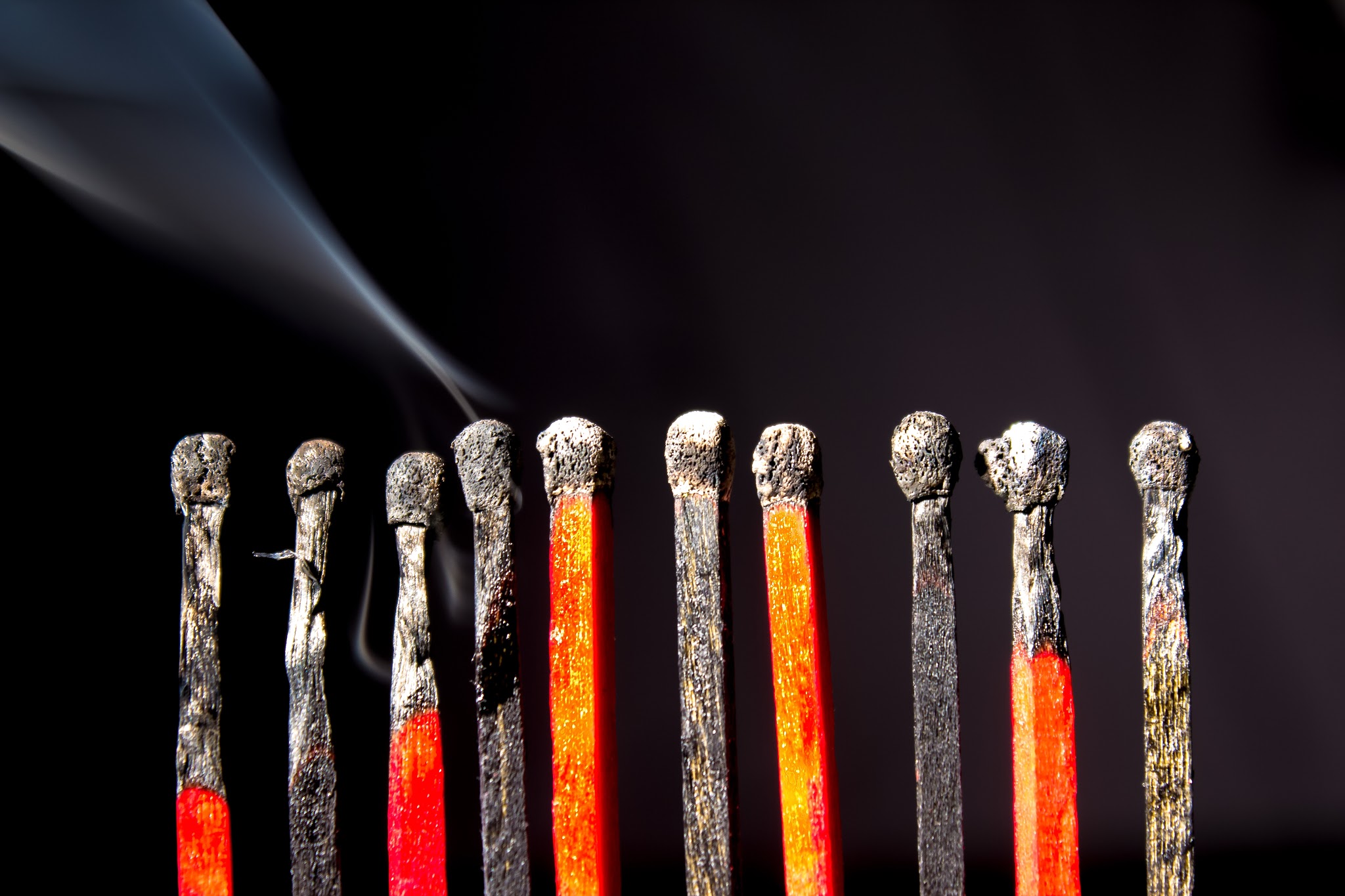
BURNOUT SERIES PART 2 of 3
As physical therapists, we know that treatment is patient and diagnosis dependent. We look not directly at the problem itself, but seek to find the source of that problem. Last week, we compared a burnout to the flu. Questions were posed to determine if you are in a burnout or at risk for one. It is important to determine the underlying source of your burnout just as it is important to determine if your flu symptoms are actually the flu or an upper respiratory infection or allergies. Let’s discuss 3 of the most common types of burnout.
Diagnosis: Not enough resources; overwhelmed.
Being overwhelmed is the type of burnout we are all most familiar. We have too much going on and not enough time to do all of it. We are concerned with deadlines, commitments, and trying our best to just stay above water.
In this case, a burnout is the result of not fueling the fire properly. We are doing too much. We’ve burned through our tinder and kindling, are running low on firewood, and it now it starts to rain. In this scenario, we need to start saying no to things. We need to leave the plentiful wet logs that will leave us with smoke and choose the less abundant seasoned firewood that will sustain us. It is not about how much you do, but instead how well you do it. Is doing too much making you settle for what is only good enough?
Diagnosis: There is no fire; disengagement.
Disengagement is a less known variation of burnout. I studied for an intense 6-weeks leading up to taking my SCS exam and when I finished the exam I was burnt out. I chalked it up to the fact that I had been overwhelmed and needed time to recharge. But, weeks went by and I still experienced feelings of restlessness. Going to work was all I could handle. I did not work out, I read less, and opted for frozen dinners or take out.
I kept trying to get the fire going again. The problem wasn’t that I hadn’t been fueling the fire properly, but rather that the fire was extinguished. I was trying to rekindle a fire from a few embers instead of igniting a new one entirely. My exam was over and so was the fire I sustained for studying. In this case, I needed to start a new fire.
Often, we are burnt out not because we are doing too much, but because we aren’t doing enough.
Fulfilling the status quo extinguishes our fire. It is our job to ignite a fire when one no longer exists. We sustain our fires, but our fires also sustain us.
Diagnosis: Fanning someone else’s flame; misguided.
When we are misguided, we often find ourselves fanning someone else’s flame. We put energy and resources into values and a fire that aren’t our own. This is one of the most difficult types of burnout because a mismatch exists between what we are doing and what we truly want to do. This requires deep reflection, planning, and difficult changes.
It is difficult enough to care for our own fire, fanning someone else’s flame will ultimately cause burnout and our efforts will have been for someone else rather than ourselves. Here, we need to figure out why we are fueling the fire in the first place.
Regardless of your burnout diagnosis, there is one surefire way to keep your fire burning. We will discuss your best weapon against burnout next week.
One thought on “Know Your Burnout Diagnosis Before You Treat It”